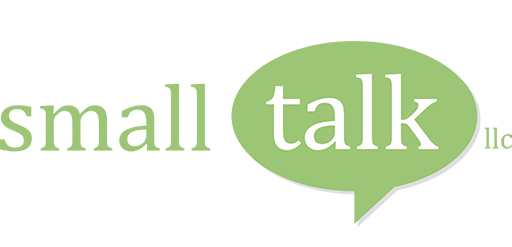By: Marci Britt, Pediatric Speech-Language Pathologist at Small Talk, LLC
As a pediatric Speech-Language Pathologist and a mom, I understand that raising a young child comes with a multitude of joys and challenges. One aspect of your child’s development that may be on your mind is their ability to communicate effectively. It’s not uncommon for parents to use the terms “speech” and “language” interchangeably, but they actually refer to two distinct yet interconnected aspects of communication. In this blog, I want to shed light on the differences between speech and language, helping you gain a better understanding of these critical components of your child’s development.
1. Speech: The Articulation of Sounds
Speech refers to the physical production of sounds used to form words and sentences. It’s the ability to articulate individual sounds and string them together to convey meaningful messages. Here are a few key points to keep in mind about speech:
- Articulation: This involves the precise movement of the lips, tongue, jaw, and vocal cords to create sounds. It’s the foundation for clear and intelligible speech.
- Phonology: Phonology deals with the rules governing the sounds of a language. Children need to learn the specific sounds and sound patterns (phonemes) of their native language.
- Fluency: Fluency relates to the rhythm and smoothness of speech. Children might face challenges like stuttering or cluttering, which affect their fluency.
- Voice: Voice quality is another aspect of speech. It involves pitch, loudness, and resonance. Some children may have voice disorders that affect their ability to speak clearly.
2. Language: The Framework of Communication
Language, on the other hand, is a broader concept that encompasses not just speech but also the rules, symbols, and structures used to convey meaning. Language can be divided into two main components:
- Expressive Language: This involves a child’s ability to express themselves using words, sentences, gestures, or augmentative/alternative communication. It includes vocabulary, grammar, and the ability to convey thoughts and feelings.
- Receptive Language: This refers to a child’s ability to understand and comprehend spoken or written language. It involves listening skills, following directions, and understanding stories or conversations.
- Pragmatics: Pragmatics deals with the social use of language. It includes turn-taking in conversations, understanding non-verbal cues (like body language and facial expressions), and adapting language for different situations.
3. The Interplay Between Speech and Language
Speech and language are intricately connected. While speech is the vehicle for expressing language, language provides the content that speech conveys. A breakdown in either can impact overall communication. For example:
- Speech Without Language: A child might have clear speech but struggle with using words to express thoughts or emotions (expressive language disorder).
- Language Without Speech: Some children may understand language but face challenges in articulating sounds or words (speech sound disorder).
4. Understanding Early Warning Signs
Recognizing the difference between speech and language can help you identify potential issues early on. Here are some red flags to watch for:
- Speech Concerns: If your child consistently mispronounces sounds, stutters, or has voice problems beyond the typical developmental stages, it may be worth consulting a speech pathologist.
- Language Concerns: If your child has limited vocabulary, difficulty forming sentences, trouble following directions, or struggles to engage in age-appropriate conversations, consider seeking a language evaluation.
5. Seeking Help
If you ever have concerns about your child’s speech or language development, don’t hesitate to reach out to a pediatric Speech-Language Pathologist. Early intervention can make a significant difference in your child’s communication skills.

About Marci Britt
Marci Britt is an ASHA certified Speech-Language Pathologist at Small Talk, LLC. She has been working with children in a private practice setting for over 20 years and is trained in Prompts for Restructuring Oral Muscular Phonetic Targets (PROMPT), Beckman oral-motor techniques, the Affect-Based Language Curriculum (ABLC) approach, Rapid Prompting Method (RPM), and neurodevelopmental treatment (NDT) techniques.


